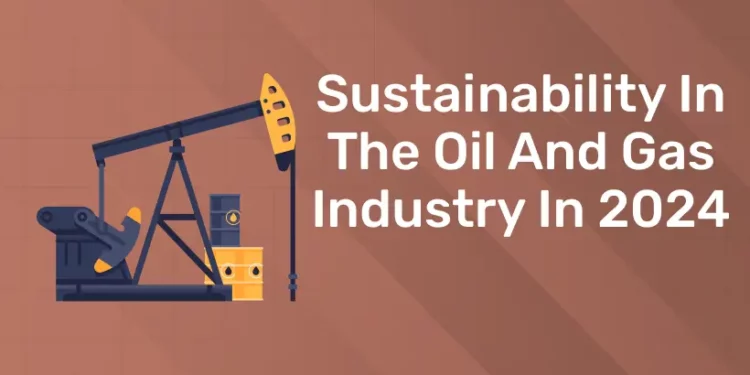Table of Contents
The industry is expected to have a solid start in 2024 because of its strong financial position and high oil prices, leading to further deterioration in the macroeconomic environment. This strength of the industry will likely enable it to finance both investments and dividends, and thus support its disciplined capital program.
Join Our Oil and Gas Course! Get Placement Assistance!
3 Trends to Watch in the Oil and Gas Industry in 2024
2023 marked exciting milestones for the energy sector, with the EU Commission welcoming a EU law to curb methane emissions, along with all the updates and announcements from the United Nations Climate Change Conference in Dubai. These events intersect with mounting investor, public and economic pressure for transparency, all while continuing to meet the global demand for affordable and reliable oil and natural gas.
As the industry gears up for another year of resilience, innovation, and sustainable growth, it is also important to recognize that the future of the oil and gas industry not only depends on meeting energy demand, but the steps taken to meet that demand. While reshaping operations in the world of digital transformations seems like an obvious move, harnessing the power of Generative Artificial Intelligence (Gen AI), and changing mindsets is what will drive the industry forward.
While we still expect for the trend of 2023 to continue to change the landscape, emerging industry concerns call for a newer narrative on the progress and possibility of a sustainable future.
Trend 1: The power of Gen AI
The rapid evolution of Gen AI presents transformational opportunities for the oil and gas industry. From immediate cost reduction and enhanced process efficiency to the creation of new revenue streams and the acceleration of innovation within the company, this next frontier of artificial intelligence provides powerful benefits across the value chain in energy production.
As oil and gas companies begin to understand the endless possibilities and applications of Gen AI, the industry can also benefit from addressing cybersecurity challenges, adapting to evolving regulations and ensuring data quality within their operations.
Trend 2: Electrification as the pathway to net-zero
The process of replacing technologies that use fossil fuels (coal, oil, and natural gas) with technologies that use electricity as a source of energy, electrification offers the industry a ray of hope in the middle of rising climate concerns.
We know that the world will be dependant on oil and gas for many more years to come, which is why electrifying operations allows for oil and gas to be produced with as low a carbon footprint as possible. From full-scale electrification of offshore installations to converting hydraulics to electric control systems, there are many ways oil and gas operators can electrify their operations to reduce emissions.
As the industry is so focused on energy security, affordability and sustainability, electrification stands out as the major factor for decarbonizing oil and gas production as a component of a more sustainable energy mix.
Trend 3: The promising potential of green hydrogen
As countries look to strengthen energy security and race to meet ambitious targets, green hydrogen offers a significant promise to help meet global energy demand while contributing to climate action goals. Produced using renewably generated electricity that splits water molecules into hydrogen and oxygen, green hydrogen is expected to be the rising star within the ongoing energy transition.
Countries are setting ambitious hydrogen targets with the US aiming for 10 million tonnes of clean hydrogen to be produced annually by 2030, which will be increasing to 20 million by 2040, and 50 million by 2050. Meanwhile, the UK has a target for low-carbon production of 10GW by 2030.
However, Global Hydrogen Review in 2023 concluded that in order to meet climate goals, the growing global demand must focus on ‘green’ production methods and low-emission applications. Furthermore, whilst low-emission hydrogen production is expected to expand exponentially by 2030, costly processes may prove challenging.
Evolving energy landscape
1: What is the primary purpose of a refinery in the oil and gas industry?
2: Which of the following is a common method for extracting oil and gas from deep underground?
3: In offshore drilling, what is the function of a blowout preventer?
4: What does LNG stand for in the context of natural gas?
5: Which of the following products is typically obtained from crude oil?
Ever wondered how much you really know? It's time to put your brain to the test!
The growing dynamism in energy trade and relationships is influencing three key factors which are :
- Changing energy trade flows: In 2021, Russia accounted for 27% of the EU’s oil imports and 45% of its natural gas imports, primarily through cost-effective pipelines. But the EU’s sanctions on Russian energy exports have increasingly driven the exports toward Asia-Pacific, primarily through seaborne trade. For example, the share of Russia’s crude oil exports to China and India has increased from 20% before the war in Ukraine to 70% in November 2022.On the other hand, the United States LNG exports to Europe have increased by 141%, or 4.0 Bcf/d, compared to 2021, while the United States distillate fuel exports to Europe increased by 146% during the first half of 2023 compared to the same period in 2022. As Europe continues to lessen its reliance on Russian energy, a surge in maritime energy trade can be expected, with some analysts estimating 90% utilization for both crude and product tanker fleets compared to 88% and 84% in 2023 and 2022, respectively.
- Widening price differential between markets: Following the sanctions, the price differential between Brent and Urals crude oil widened from US$3/bbl in 2021 to more than US$37/bbl in April 2022. However, it has come down since then and, as of late 2023, remains above US$17/bbl, Similarly, Dutch TTF-to-US Henry Hub natural gas price ratio has increased from three to eight between January 2021 and August 2022. This price difference between grades and regions has likely altered the competitiveness of refiners, chemical companies, and manufacturers worldwide.
- Growing energy trade in multiple currencies: An increasing number of bilateral energy deals are happening in the local currencies of importing or exporting nations. Many Asian nations, for example, have started settling energy trades in their own currencies. In fact, the alternative currencies trade such as the ruble-yuan increased by many folds, albeit starting from a low base, between February and October 2022. As trade flows and geopolitical alignments continue to evolve, there could be a continued growth in local currency settlements in energy transactions. This marks a potential transformation in the energy market landscape, which holds implications for currency markets and the trade balance of nations as well.
What can the industry expect in 2024?
Given the healthy cash flows, financial health, sustained capital discipline, and rapid technological progress in the industry, oil and gas companies seem relatively well positioned to increase focus on the energy transition in 2024. This may involve concerted efforts to curtail emissions from hydrocarbons while augmenting investments in scalable and economical low-carbon solutions. In 2024, oil and gas companies should consider the following in their key decision-making:
- State of the economy: Any sharp movement of the US dollar against other currencies, combined with the manufacturing activity and consumer spending, could impact inflation, thereby influencing energy prices in 2024. Additionally, strong job growth could impact wage increases and contribute to even higher inflation. These factors could play a role in shaping the dynamics of energy trade and influencing the competitiveness of energy-dependent downstream sectors globally.
- Shifts in geopolitical and regulatory landscape: The interplay of OPEC and its partners in managing energy supplies, alongside the situation in the Middle East, can significantly influence the equilibrium of hydrocarbon supply and demand.
- Technology affecting automotive and mobility trends: The trajectory of EV sales worldwide, shifts in mobility patterns, innovations in battery technology, and manufacturing, and advancement in engine technologies, including internal combustion engines, may influence the business models and investment strategies of petroleum refining and marketing companies.
- Deployment of upstream capital: How and where global upstream players deploy their capital in 2024 will likely signal fundamental changes in their investment and payout strategy and fuel priorities for years to come. Additionally, the market is expected to closely monitor how companies distribute their green capital between renewable electricity sources and alternative low-carbon options such as energy storage, hydrogen, and biofuels.
- Rig and supply responsiveness impacting operational efficiencies: As of October 2023, the US oil and gas rotary rig count stood at a yearly low of 623, demonstrating limited response to recent changes in energy prices. However, in 2024, the market will closely monitor the rate and lag in operators responses, especially those of private operators.










